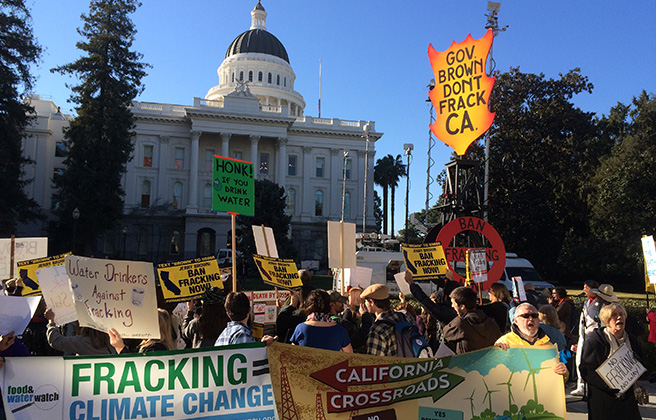Connecting Climate Justice and LGBTQ+ Justice: Three Youth Activists Fighting for Both
Jul 25, 2024
 Credit:
North Carolina Division of Water Resources
Credit:
North Carolina Division of Water Resources
Every Monday, we round up five of the best good climate news stories we’re celebrating. This week we’re covering California’s proposed fracking ban, the launch of the USDA’s Working Lands Climate Corps, offshore wind in Oregon, initiatives for community solar, and North Carolina’s plan to conserve forests and wetlands.

California’s oil and gas regulator has proposed a permanent ban on hydraulic fracturing or “fracking” in the state. There has been a “de facto ban” on fracking in California for several years, as the Newson administration has not issued any permits since 2021. This proposed rule would formally end the practice in the state.
Ending fracking will reduce strain on California’s limited water resources, reduce risk of pollution from toxic spills and leaks, and improve air quality in the state.
Source: Energywire

The U.S. Department of Agriculture (USDA) has announced the launch of the Working Lands Climate Corps, a program to provide training on climate-smart agriculture solutions, as part of President Biden’s American Climate Corps.
The Working Lands Climate Corps will provide technical training and job opportunities for young people to tackle climate change in rural areas. The program will promote sustainable farming practices to help mitigate the impacts climate change is having on the farming industry and food production. The first Working Lands Climate Corps cohort will create more than 100 jobs and help deliver on the Biden administration’s economic and climate goals.
Source: USDA

The Biden administration has finalized the designation of two areas off the coast of Oregon where offshore wind developers may build wind farms. Developments in the newly approved areas could generate up to 2.4 gigawatts of electricity, or enough to power nearly 2 million homes.
Increasing the number of approved offshore wind areas will help accelerate the development of offshore wind in the U.S. and help the Biden administration achieve its goal of deploying 15 GW of offshore wind by 2035.
Source: Greenwire

The Department of Energy (DOE) has issued a challenge to the solar industry to triple the amount of community solar capacity in the country, from seven gigawatts to 20, by 2025. If this goal is reached, it would create $1 billion in energy savings and be instrumental in ensuring an equitable, affordable energy transition across the nation.
Along with the challenge, DOE unveiled a slew of initiatives to support the deployment of community solar in order to reach the target of 20 GW by 2025.
Source: Department of Energy

Last week, North Carolina Governor Roy Cooper signed an executive order with 2040 conservation goals that he says will help North Carolinians to “leave the state better than [they] found it.” The legislation will permanently conserve 1 million acres of wetlands and forests, restore protections for another million acres, and plant 1 million trees in urban areas by 2040.
The governor’s office called the executive action “the most significant by a governor to protect the state’s ecosystems” since 1999.
Source: AP
Check out the Power Source Blog and follow us on Instagram or Twitter for more Good Climate News every Monday.